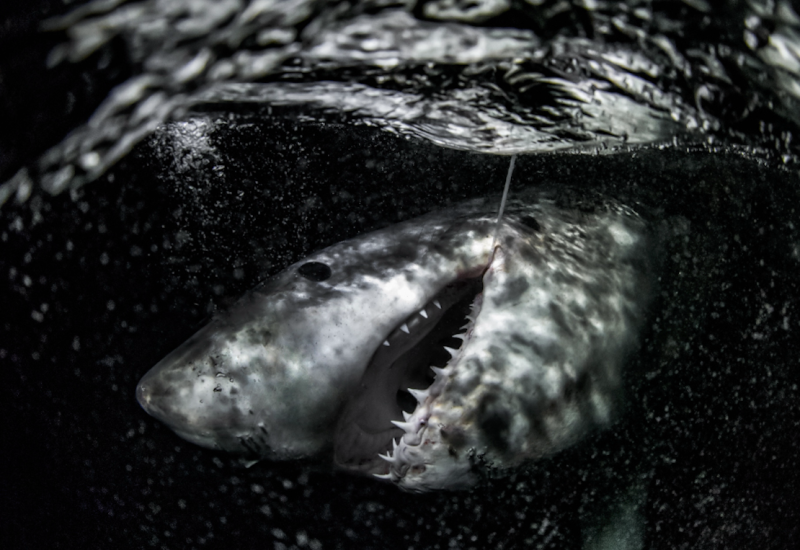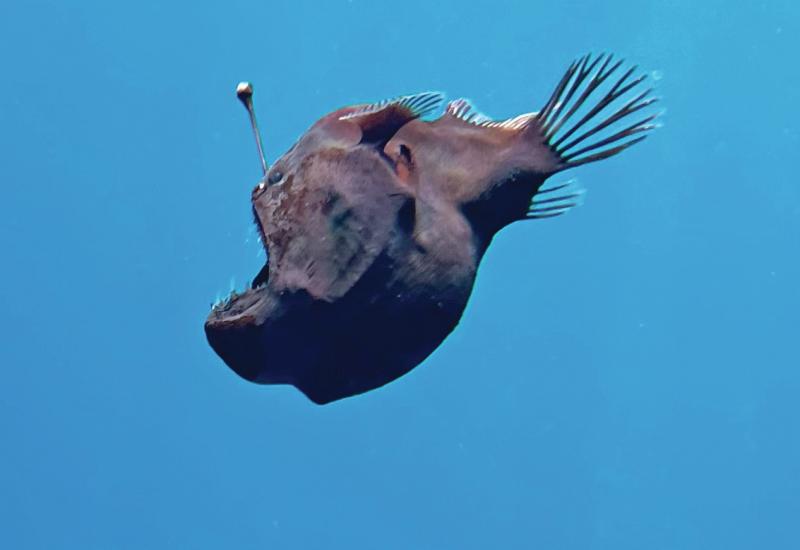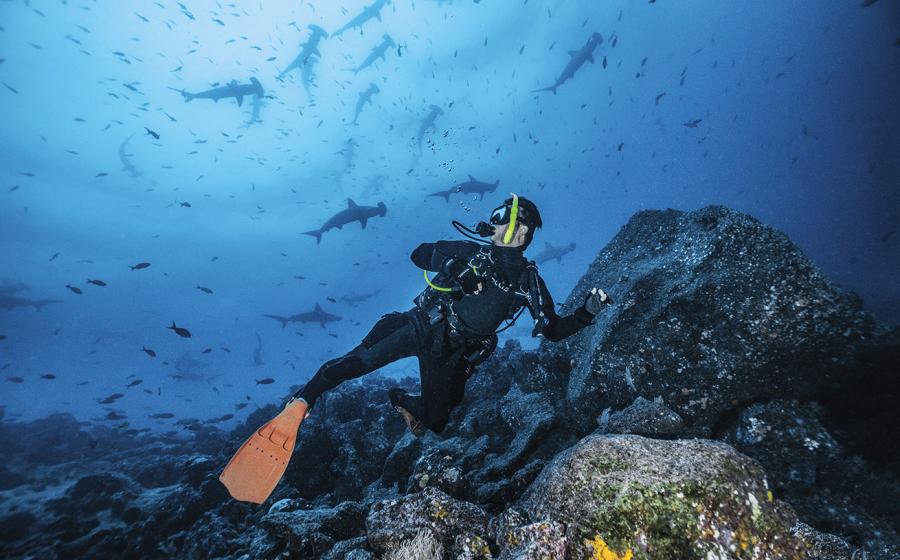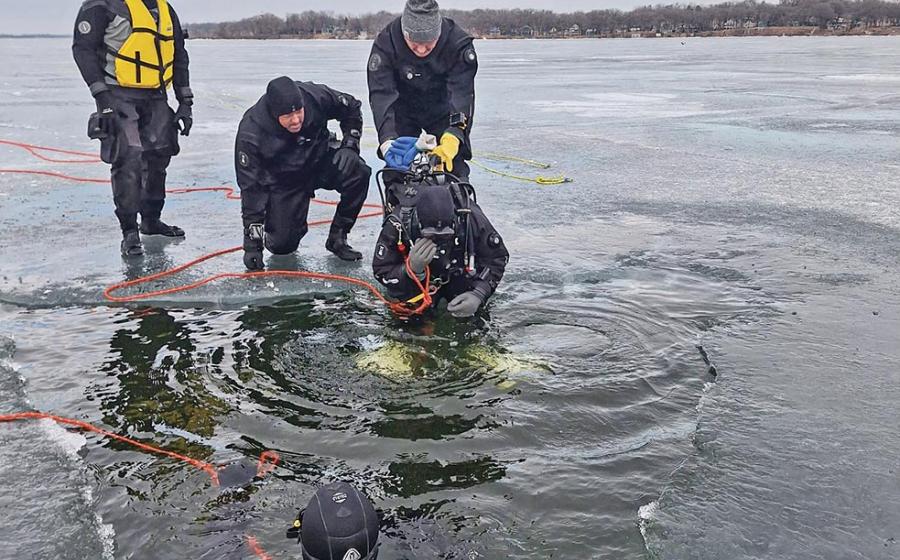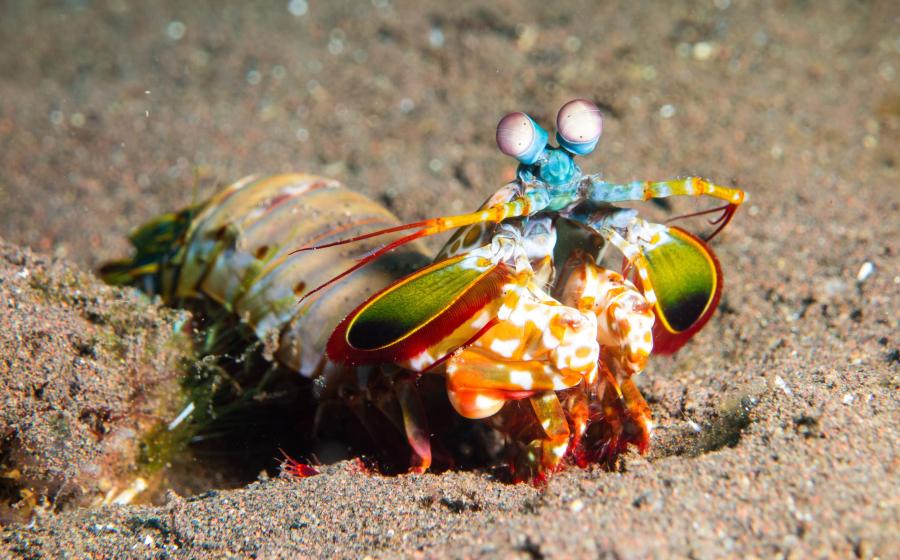Up Close With Seabed Sharks

Zebra sharks are born with striped markings that change with age to leopard spots.
Shark. Say the word, and the image that pops into many people’s heads likely resembles a scene from the big screen—a great white as it menacingly stalks its prey, for example. Seabed sharks challenge this perception, and show us that sharks and their behaviors are far more wide-ranging. Species like nurse sharks, wobbegong sharks, angel sharks and horn sharks are many divers’ first shark experiences. Given the frequency of these encounters, it can be easy to underestimate their predatory abilities, especially when compared to A-list species like great whites or tiger sharks. But this is a mistake. Some of the most fascinating adaptations in the shark world are found on the seabed. Since these species are often resting, we can get close enough to study them in detail.
It is often said that sharks are covered in teeth because their skin is composed of dermal denticles known as placoid scales. Made of the same material as human teeth—dentine and enamel—these denticles create a very tough, protective layer and reduce drag, letting sharks swim faster and quieter while using less energy. It feels as rough as sandpaper against the grain and smooth as velvet with it. Interestingly, the first vertebrates believed to develop teeth were fish, and those teeth are thought to have evolved from scales that eventually grew into and integrated with the mouth.
Related Reading: The Future of Diving With Great White Sharks
Sharks’ skin texture makes for great close-up photos when you find species like the nurse shark on a macro dive. Close the aperture, and try to stay parallel to the shark to keep everything in focus. Consider including an eye or gill slits for variation.
Many seabed sharks have appendages around the mouth. For example, nurse sharks have sensory whiskers called barbels that help them detect food. Named for the sucking or nursing sound they make when hunting and eating, these sharks mainly feed on invertebrate life, such as mollusks and crustaceans, which they hoover up from within the sand and crush with their wide teeth.
The best-named shark, though, is the tasselled wobbegong, which is aptly classified as a carpet shark for its flattened body decorated with camouflaged patterning. The wobbegong name comes from an Australian Aboriginal word meaning “shaggy beard.” The tasseled wobbegong does have a magnificent beard, which helps to conceal the face of this effective ambush predator. When photographing the head of a wobbegong, use a single strobe to create a shadow that makes it stand out from the seabed.
While wobbegongs have fantastic disruptive patterns, the zebra shark earns top marks for its stylish appearance, which evolves with age. This species hatches with striking zebra stripes, but as it grows, these quickly transform into leopard spots. I’d never seen a baby until recently, but there is a new initiative called ReShark that takes zebra shark eggs laid in public aquariums and flies them back to regions where populations are dwindling. The eggs are hatched in a local shark nursery, where they’ll remain through their vulnerable first months and then be released into the wild. I was able to see a handful of youngsters on my recent visit to Misool, Raja Ampat, including one that had hatched from an egg laid in Las Vegas!
Related Reading: How to Photograph Pelagic Sharks
Angel sharks take the flattening of the standard shark body the furthest. They are masters of the ambush, often lying half-buried in sand. I love how they disguise their eyes, reducing the pupils to the tiniest slits during the daytime, while if you see one at night it is wide and obvious. Sadly, angel sharks are critically endangered because they have been targeted so extensively by fisheries.
There are plenty more seabed sharks, such as bullhead and horn sharks, many species of catshark, and my favorite, the epaulette or walking shark. Epaulettes are not keen swimmers, but they are very mobile and prefer to walk across reef and tide pool habitats using muscular, leg like paired fins.
Seabed sharks may not have the main-stream allure of their better-known cousins, but for the shark connoisseur, they are often the most rewarding to spot.


